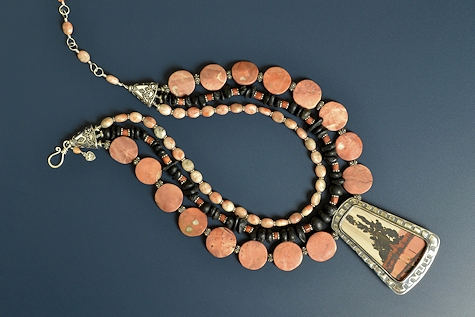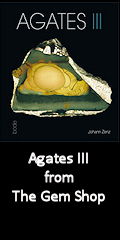When I do shows, stones like this one invariably cause people to ask how I painted the image. The back of the stone is open so I can show them that the image goes clear through the stone. It was not painted or enhanced in any way, it is just as the Great Mystery painted it. Leigh Becker (of Eidos) somehow cut the rough rock in just the right way to find the image inside. This rock always has beautiful colors, but finding one with such a clear image in it is unusual. Since I'm an incorrigible desert rat, the scene looks to me like cottonwoods on the bank of a stream bed. Childs mentions cottonwoods throughout his most extraordinary desert book The Secret Knowledge of Water (below) .
Leigh labeled this beauty "Desert Paint Rock" and I should have asked about that name because I'm having trouble finding it online. I thought it was called "Indian Paint Rock" which comes from the Death Valley area and from Nevada. I wonder if perhaps vendors are starting to distinguish the two with slightly different names? Whatever the name, it appears to be a sedimentary rock, some geologists apparently call it a jasper though Zenz says it is either poorly silicified or not silicified at all and thus cannot be considered to be a jasper. He reluctantly includes one example "for completeness sake." It is composed of sandstone with traces of iron and manganese forming the patterns. Relatively soft, it polishes to a satin finish. The matte stones in the necklace complement the centerpiece both in color and in finish.
David Zindell, in his essay inspired by a gorgeous image of Indian Paint Rock in the "Earth" section of Within the Stone, begins brilliantly with, "Tibetan lamas make fantastically complex and beautiful sand paintings..." How apt to relate that Tibetan meditative practice to our Mother Earth's patient, grain by grain rendering in this stained sandstone! I hope you will order this unusual "painted" composition today. Perhaps the stone will whisper the answer to Zindell's question: "The monks pray for peace, understanding, enlightenment, compassion. What, I wonder, does the earth pray for?"








